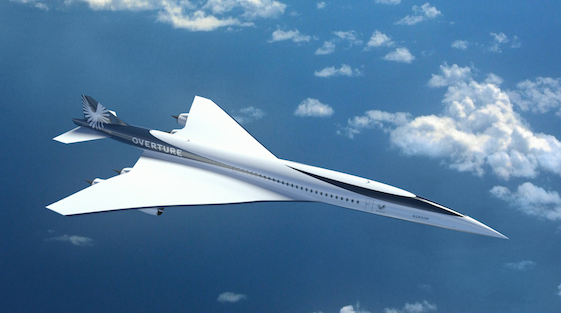Boom Supersonic, which is building a $500 million facility at the Piedmont Triad International Airport, had some major announcements at the Paris Air Show this week.
Boom plans to manufacture a supersonic passenger jet, the Overture, in Greensboro, employing a minimum of 1,750 people. Boom announced agreements with three European aerospace companies to design and build components of the Overture and made additional announcements about the engine design and manufacturing process.
Boom announced that Aernnova, based in Spain, would design and develop the wing structure for the Overture. The wings will be gull shaped and thinner than typical passenger jet wings to reduce drag and allow the Overture to travel efficiently at higher speeds, according to the announcement.
Leonardo, based in Italy, will engineer, design and build two major fuselage sections of the Overture, including the wingbox.
The Overture has a contoured fuselage design that has a larger diameter toward the front of the aircraft and a smaller diameter toward the rear to minimize wave-drag and maximize fuel efficiency at supersonic speeds.
In the press release, Leonardo’s Aerostructures Division Managing Director Stefano Bortoli said, “Leonardo has played an integral role in shaping the success and future of the aviation industry. We build on that tradition and believe in Boom’s continued, and impressive, progress toward bringing sustainable supersonic air travel to the skies.”
Boom announced that it had selected Aciturri, based in Spain, to design and develop the empennage, what most people call the tail, for the Overture.
The empennage for the Overture will feature a differentiated horizontal stabilizer to allow for greater control at subsonic speeds, particularly at take-off and landing.
Boom also revealed more specifications about the engine architecture for the Overture engines, which it is building from scratch with a number of partners.
Boom has an ambitious schedule for the production of the Overture, with flight testing planned for 2027 and federal certification in 2029.


Will Greensboro become the next Seattle? The dread is palpable.
Does Boom know about local politics? I will see that they do.